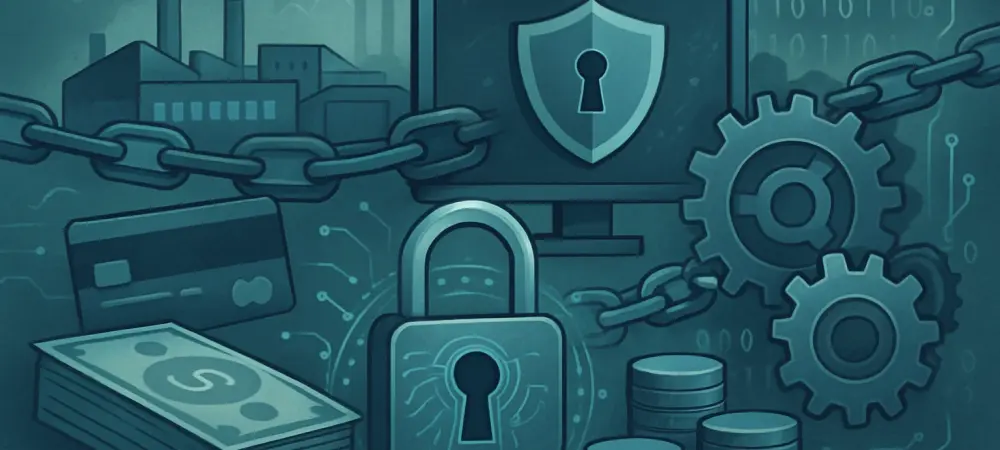In an era where digital transactions underpin global economies, a staggering reality emerges: over 60% of financial sector breaches originate from vulnerabilities in supply chains, exposing sensitive data to unprecedented risks. This vulnerability underscores a critical challenge in the financial industry, where the stakes of a single cyber incident can ripple through markets, erode customer trust, and trigger massive financial losses. Cybersecurity stands as a cornerstone of stability in this sector, yet a significant disparity exists between the preparedness of financial firms and their vendors. This analysis delves into the alarming security gaps within financial supply chains, explores key trends in vendor oversight, examines real-world implications, incorporates expert insights, and offers a forward-looking perspective on bridging these divides with actionable strategies.
Unveiling the Security Divide: Financial Firms vs. Vendors
Key Data and Disparities in Cybersecurity Performance
Financial firms have long been at the forefront of cybersecurity, yet their vendors often fall short in critical areas. According to a comprehensive report released on November 6, vendors lag behind financial institutions in 16 out of 22 cybersecurity risk vectors. Particularly glaring are gaps in web application security and Transport Layer Security (TLS), where differences in performance can reach up to 15%, leaving potential entry points for attackers.
Despite these shortcomings, vendors do outperform their clients in select domains. Notably, they excel in email security measures such as DMARC and DKIM protocols, as well as DNSSEC for protecting domain data, often surpassing financial firms by significant margins. This mixed performance highlights a complex dynamic where vendors may prioritize specific protections while neglecting broader security frameworks due to resource constraints or differing priorities.
Another striking trend is the extent of oversight within the sector. Financial firms monitor approximately 36% of their supply chain, a figure that exceeds the cross-sector average of 25%. However, this level of scrutiny is still deemed insufficient by industry analysts, given the escalating frequency of supply chain attacks and the critical role vendors play in the ecosystem.
Real-World Implications of the Security Gap
The consequences of vendor vulnerabilities are far from theoretical, as supply chain attacks in the financial sector have led to substantial disruptions. Consider a scenario where a vendor’s weak endpoint security allows hackers to infiltrate a payment processing system, compromising millions of customer records. Such incidents, though often anonymized in public reports, reveal how a single weak link can jeopardize an entire network.
Compounding this risk is the disparity in vulnerability exposure based on monitoring practices. Unmonitored vendors exhibit roughly three times more critical vulnerabilities compared to those under regular oversight. This statistic illustrates a direct correlation between active monitoring and reduced risk, emphasizing the urgent need for comprehensive vendor assessments.
Beyond individual breaches, these gaps threaten systemic stability in the financial industry. A compromised vendor could serve as a gateway to multiple institutions, amplifying the potential for widespread damage. This interconnectedness demands a reevaluation of how supply chain security is managed and prioritized.
Expert Perspectives on Supply Chain Risks
Insights from cybersecurity professionals underscore the pressing need to address vendor weaknesses within the financial sector. Industry thought leaders stress that the current security divide poses a significant third-party risk, especially as attackers increasingly target less-protected suppliers to gain access to larger institutions. This viewpoint reinforces the call for heightened vigilance.
A nuanced observation from experts concerns larger vendors, which, despite being subject to extensive monitoring, exhibit a slight decline in security performance. This trend is attributed to operational complexity and broader attack surfaces, which create unique challenges in maintaining robust defenses. Such findings suggest that scale alone does not guarantee resilience and may even introduce additional vulnerabilities.
There is a strong consensus on the importance of continuous monitoring and strategic engagement to mitigate these risks. Regulatory pressures further amplify this need, as financial institutions face stringent compliance requirements to safeguard data. Experts advocate for a proactive approach, urging firms to integrate vendor security into their core risk management strategies to prevent cascading failures.
Future Outlook: Bridging the Cybersecurity Gap
Looking ahead, the financial sector is poised to adopt more sophisticated vendor monitoring practices to enhance supply chain security. Emerging technologies, such as automated risk assessment tools and artificial intelligence, could revolutionize how firms identify and address vulnerabilities. Additionally, stricter regulatory frameworks may mandate higher standards for third-party oversight, pushing vendors to elevate their defenses.
Intensified monitoring offers clear benefits, including a marked reduction in third-party risks and improved resilience against cyber threats. However, challenges persist, such as allocating sufficient resources to oversee sprawling vendor networks and navigating complex relationships with suppliers. Balancing these demands will require innovative solutions and a commitment to long-term investment in security infrastructure.
The nature of cyber threats in financial supply chains is also evolving, with attackers becoming more sophisticated in exploiting vendor weaknesses. If gaps remain unaddressed, the risk of large-scale breaches will persist. Conversely, enhanced monitoring and collaboration could significantly bolster defenses, setting a new standard for security across the industry from 2025 onward.
Conclusion: Strengthening Financial Supply Chains
Reflecting on the insights uncovered, it becomes evident that a substantial cybersecurity gap exists between financial firms and their vendors, with monitoring disparities and the unique struggles of larger vendors posing persistent challenges. Addressing these vulnerabilities proves essential for protecting sensitive data and upholding trust in the financial ecosystem. Moving forward, financial institutions are encouraged to deepen vendor oversight, leverage cutting-edge technologies for risk detection, and foster collaborative partnerships to build a more resilient supply chain against the ever-evolving landscape of cyber threats.

